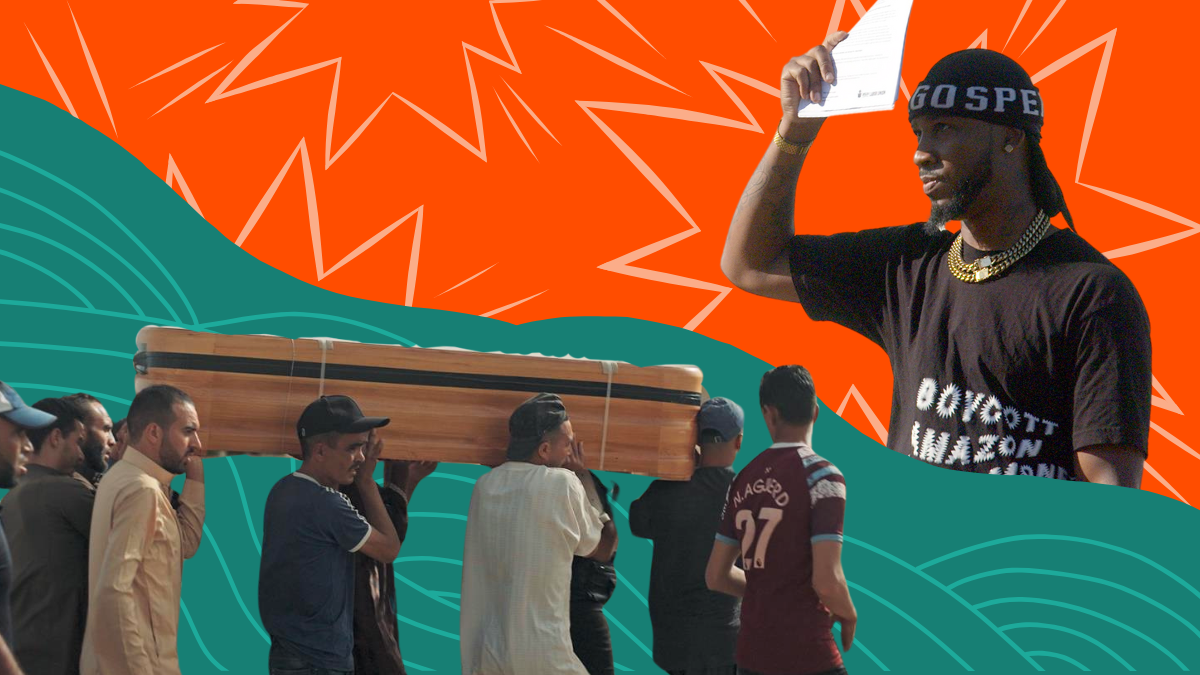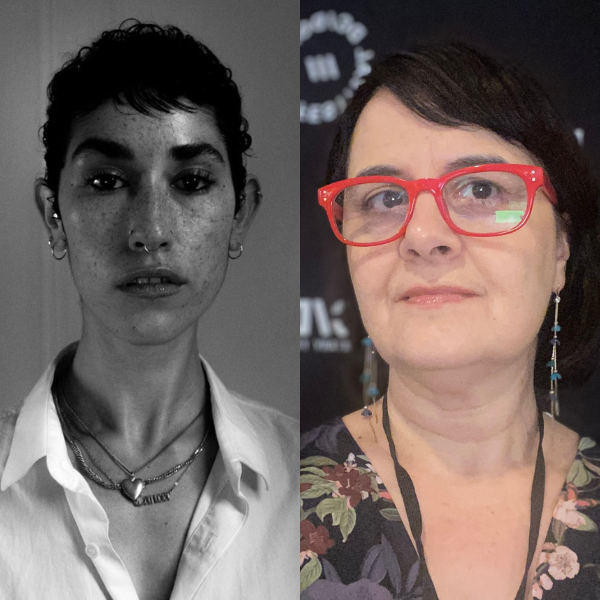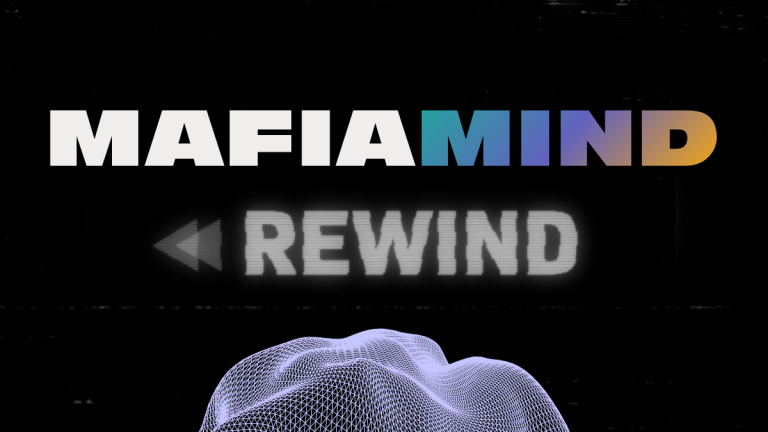
Mars Verrone: Firstly, thank you for creating Until He’s Back. This is a devastating, haunting film told in a stunning and emotionally evocative observational style.
Marga Varea: Thank you, Mars, and huge congratulations on the success of Union. I had the opportunity to watch the film in Washington, DC last June, and was impressed by the intimate approach and your ability to build a deeply compelling narrative through the authentic voices of your subjects.
Mars: Was it challenging to craft impact campaign plans for an observational documentary like this? This is something we thought about a lot with Union and how we would approach ours. Maybe first I should ask, what are your impact goals for Until He’s Back? What was the process of crafting these goals and the vision for your impact campaign?
Marga: Working with Until He’s Back and collaborating with director Jacqueline Baylon has been an incredible experience. This was her directorial debut, and her passion and drive in making the film shined through, becoming the driving force behind our release. Jacqueline was born in Mexico. She and her mother crossed the border illegally when she was a child, so she fully understands the need to humanize immigrants and to bring this conversation to the forefront, especially now. The film did exceedingly well in festivals, and that became our focus, absorbing our energy and limited resources. Now, we have ambitious plans for the film to drive change with an impact campaign that will center on issues of global immigration, highlighting the human cost and the individual tragedies that are often lost in the news cycle.
The current administration has made immigration a priority and, unfortunately, it will be stigmatized further. This film is meant to educate viewers and create empathy for migrants’ journeys. To me, Until He’s Back is the perfect impact film. Over the years, I've observed that, while some emphasize a purely functional approach to impact filmmaking, true change often happens when films reach audiences through the combination of powerful storytelling and beautiful craft. That experience, which respects the audience's ability to process complexity and nuance, stays with people and inspires them to engage in conversations and with the issues long-term.
I’m curious about the initial trajectory you envisioned for Union’s release, and how you adjusted to the challenges we’ve seen in the distribution landscape this year. What are the ways you’ve brought the film to audiences? What strategies do you think worked best along the way?

Chris Smalls gathers signatures for the Amazon Labor Union in the 2024 documentary, Union.
Mars: I love how you articulated that the strongest impact filmmaking comes from crafting beautiful films and complex, nuanced storytelling. I think impact work can get a bad rep from often being misconstrued as didactic and purely functional, as you said. But we’ve experienced the kind of change you’re describing in a lot of our impact screenings thus far for Union. Rather than having an instructional approach or a simple call-to-action, these impact screenings are all about conversation. And you can feel how those discussions will be the seeds of long-term forms of engagement and organizing. It’s been so fruitful and fulfilling to witness.
When we were finishing the film, we didn’t really have the clearest vision for Union’s release plan because we were hearing such mixed messages about the possibility of securing a mainstream distribution deal. But we did have a set of goals going into our release: a robust life on the festival circuit, a theatrical run, awards consideration, an impact campaign, and most importantly, the ability for the wide public to easily access the film sooner rather than later. Very ambitious! A few weeks after premiering at Sundance, when it initially became clear that there was no interest from big streamers and distributors, we took matters into our own hands and we jumped into gear for self-distributing the film.
We’ve brought the film to audiences nationally and internationally in three main ways. We’ve played at film festivals — I think we’re nearing 100 at this point. We’ve played in theaters in over 20 U.S. cities, as well as London. And we had a limited online release from November 28 — Black Friday — through January 2025, where you could rent the film anywhere in the world on Gathr, a direct-to-audience platform. When renting, you could also donate to a fund providing free screenings for Amazon workers. So, impact work was intertwined with every aspect of our self-distribution.
What I would say contributed to the most success was strong partnerships with labor unions and other mission-aligned organizations. Having partners who could turn out their membership and support us with multiple rounds of outreach on newsletters, social media, et cetera, was the most effective way not only to get people to see the film, but to make sure our target audiences saw the film — Amazon workers, labor organizers, union members. I would also say, if you’re working with a limited budget, as we are, budgeting for digital marketing and advertising goes a long way.
What strategies for audience engagement is your team planning for? What is your approach to partnerships?
"True change often happens when films reach audiences through the combination of powerful storytelling and beautiful craft."
Marga Varea
Marga: Those are truly remarkable accomplishments! You've navigated success on your own terms, defying the false narratives that suggest success can only be achieved through major streamers.
We've spent a lot of time thinking about how to make the most of this film's impact campaign. We know that, at the heart of it all, we need to humanize immigrants and their journeys. That's why we're focusing our efforts on the US-Mexico border, Washington DC, and major cities with large immigrant populations like New York, Los Angeles, and Miami. The campaign will also have an international focus, with a particular emphasis on Morocco and Spain, where we hope to initiate parallel conversations on both sides of the border.
We’ll time our screenings and events around key dates like World Refugee Day in June and National Immigrants Day in October. We’ll engage a variety of organizations to host screenings at arthouse cinemas, libraries, schools, and other community venues. These events will be followed by conversations led by local experts, advocates, and migrants. We encourage organizations to use these events to bring their communities together, have open discussions, and figure out how they can take action.
Another item in our wishlist is to reach future leaders at schools of international affairs, public policy, and law. We will do this through direct outreach and campus events, but also, in partnership with our educational distributors, whom we’re currently engaging.
I started working on creative film releases with partnerships in 2008, the landscape has changed a lot. Finding partners in an increasingly saturated environment presents some challenges. I like to avoid shortcuts and invest time in research to find the best possible alignments, ideally outside of the mainstream. Cultivating these relationships with care, honesty, and generosity has consistently yielded the most successful outcomes for our films.
Given our small, independent team, this campaign will rely heavily on strategic partnerships at the national or regional level, with the hope that they mobilize their networks and local communities around the film. Of course, we'll adjust our strategy as we go and if we have more resources to work with.
This has been a great conversation. To wrap things up, I'd love to hear about your team's approach to awards campaigning. How did you juggle that work alongside all the other aspects of your release?
"Deep research into who would make for a good partner, developing compelling and specific pitches as to why, and then building actual interpersonal relationships are critical and take a great deal of time and effort."
Mars Verrone
Mars: A lot of this really resonates with what I learned as a first-time producer, learning how to navigate self-distribution and impact work. Just because a group is mission-aligned does not mean they’ll be a great campaign partner. Big, mainstream organizations can be really inundated with all kinds of requests, and even if they have good intentions or the desire to support, sometimes they just can’t show up in the ways you need. Similar to labor organizing, there are no shortcuts to building partnerships. Deep research into who would make for a good partner, developing compelling and specific pitches as to why, and then building actual interpersonal relationships are critical and take a great deal of time and effort.
As far as an awards campaign, like most filmmakers I admire, we did not make Union to win awards. We made it to create conversation, spark ideas and honor something really special. But because we were self-distributing, there was a real risk that the film could be rendered invisible and be swept under the rug. For as many very valid criticisms exist around the awards industry — gratuitously self-congratulatory, increasingly culturally irrelevant, influenced by outdated voting models, implicitly designed for only big players with multi-million dollar budgets — at this point in time, awards still hold a powerful cachet in our industry that felt worth strategizing around. Seeking awards recognition meant drawing attention to Union, making the film undeniable and impossible to ignore.
We were working with a modest budget for self-distribution, festivals, impact, and awards. This meant that we were often doubling or tripling up the purpose of screenings and events. For example, a theatrical screening would be co-presented with a union and also promoted by our publicity team to awards influencers, combining self-distro, impact, and awards goals.
It should be more widely discussed how astronomically expensive a classic awards campaign is. Because of our limited budget, we were very reliant on our community to do the bare minimum of what an awards campaign requires. We were calling in favors everywhere we could from influential supporters, our partners, and organizations that had supported film’s production. I feel really proud of what we accomplished — we were nominated for a Gotham Award, won a Cinema Eye Honors award, and while we didn’t end up receiving an Oscar nomination, we made it to the shortlist. All of this feels extraordinary given how grassroots the campaign was. And in the end, pursuing this campaign felt worth it and generative as far as promoting the film and building our support network.
I’ll end by returning the question back to you about your team’s approach to awards alongside impact. Are there any final thoughts you’d like to share that we haven’t touched on so far?

Moroccan men carry a wooden coffin in the documentary Until He's Back.
Marga: It’s so refreshing to hear from a team that understands the value of their work and empowered themselves to carry the film all the way through with such intentionality and trust in their film.
For us, the trajectory towards awards developed organically after we won Best Documentary Short at Big Sky, our world premiere. The festival is an Oscar qualifier, and reading the jury statement, we felt for the first time that others could see the value and beauty of the film. That encouraged us to consider submitting to the Academy, and to double our efforts to find the right festivals to showcase Until He’s Back. It wasn’t until a few months later that industry support around the film became more apparent. POV Shorts showed an interest in acquiring the film, and we had our broadcast premiere last fall in their seventh season. We were selected for festivals like Woodstock, Mountainfilm, and Hamptons International, where we won a special jury mention and Best Documentary Short respectively. In the fall, we made the DOC NYC Shortlist Shorts program. At that point, we were deep into juggling our hopes for impact with the reality of the resources we needed to make the most of these selections — resources we often didn’t have. Then we received a nomination from IDA, and we were so honored.
I couldn’t agree more with your assessment of the awards landscape. There were many internal conversations about how to best approach and balance the reality that every recognition afforded amazing visibility to the film, thus impact, but as an independent team running a grassroots campaign, we couldn’t always take full advantage, and had to make difficult financial choices. The goal of our awards campaign was to increase visibility for the film while reaching out to voters, but our budget was driving most decisions, including where to travel, platforms for promotion, how many screenings we could afford to secure, and much more.
For me, the film resonates deeply on a personal level. Yaya's body washes ashore on a beach in my hometown of southeastern Spain, a region sadly familiar with such heartbreaking stories. On the other side, we meet his family in Morocco, a country I have personal connections to, as my father was born in the Moroccan border city of Melilla.
I’ll close by saying that Until He’s Back is a huge success. Working with Jacqueline on this journey has been one of the most rewarding experiences of my career. We’re grateful to David Magdael and his team, Opal H. Bennett and the POV team, and of course the entire film crew for their support and presence through the release. We were not nominated for an Academy Award, but in a way we had already won. The way this film has touched people, and will continue to make an impact along the way, is all we can ask for.
Mars: I agree, this was a really wonderful and honest conversation. Thanks for sharing so much wisdom and congratulations on the film’s success. I just wanted to thank a few people who have really made Union’s combined self-distribution, impact, and awards campaign soar: our impact producers at Red Owl, Michael Tuckman who handled our theatrical booking, our festival booking team at Film Collaborative, our publicity team at Cinetic Media, our executive producers Impact Partners, and more. I also want to shout out producer Samantha Curley and co-director Steve Maing who, on top of everything else, have been incredibly devoted to Union’s impact work. And finally thank you to the Amazon workers and organizers who have done so much to connect the film’s release to ongoing organizing efforts.
Until He's Back is now streaming in the U.S. on pbs.org as they seek out international distribution. For Union, you can request a screening of the film, as well as follow them on social media for updates and future opportunities to see the film.






.png?resize=768x0)
